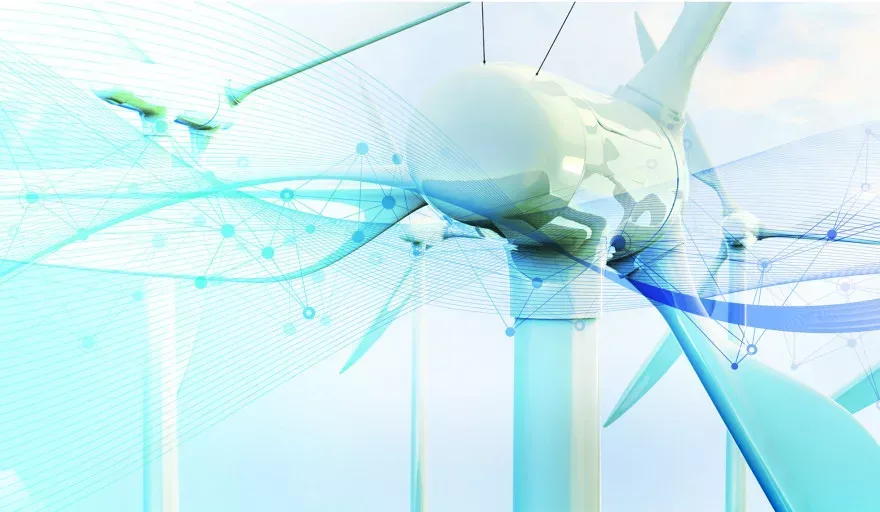CEO of Clir Renewables, Gareth Brown, examines the need for a ‘big data’ approach across the US to accelerate the renewable energy transition.
US renewable energy is on the cusp of major growth, with rapid buildout of onshore wind and solar underway, and over 30 gigawatts (GW) of offshore wind due to come online by 2030. However, as we have seen in Europe, after a couple of years of operation, problems can start to arise – seemingly out of nowhere – for offshore wind farms.
Clearly, these problems have a source. But without a strong data monitoring and analysis strategy in place, these new developments could face ongoing and unnecessary drops in energy production, and therefore revenue.
Largely, the ongoing nature of this issue is thanks to an assumption-based approach to identifying and quantifying the causes of production losses. This article explores the need for US renewable project owners and investors – those looking offshore in particular – to take a ‘big data’ attitude to project performance in order to drive a successful, profitable energy transition.
UNPICKING UNDERPERFORMANCE
While the successful buildout of offshore wind farms in Europe provides a valuable lesson for installing projects, the burgeoning US offshore wind industry must also learn from common mistakes and assumptions made by European and North American onshore projects around underperformance once these projects are online.
Often, underperformance for the first few years is blamed on a low wind resource, the most common culprit for low production. However, fluctuations in windspeed cannot account for patterns of year-on-year underperformance – and after several years of lost revenue, owners have started to look through the data to figure out whether they really are just unlucky, or if there’s a deeper problem with the turbines.
For example, a sensor error that pitches turbine blades to the wrong degree can cause a dip in annual energy production that will not immediately raise suspicions as it will often be masked by larger, resource-based fluctuations in production volume. Over the years, however, this small drop in annual energy production could be unnecessarily losing the project owners millions of dollars in revenue.
In order for project owners to recognize these small but significant losses and take action to fix them right away, all data from a project must be analyzed in context – from individual turbines to their neighbors in the project and the environment itself.
Usually, once a project owner has recognized that underperformance is occurring, they will contract a consultancy to identify what those small but fixable causes of underperformance are. However, the size of the data sets and the variety of formats in question can often see analysis take weeks, even months, to finalize on a case-by-case basis.
To get to the root of the problem quickly, forward-thinking energy project owners are increasingly turning to big data solutions such as artificial intelligence and machine learning. These methods of analysis have enabled other industries to shrink the time needed to identify problems down to days, hours, or even minutes. An algorithm trained by asset data and industry expertise can similarly provide asset owners with ongoing insights into project performance beyond the initial “problem-spotting” phase.
PREDICTING FUTURE PERFORMANCE SHOCKS
Through big data analytics, offshore wind project owners can gain insight into not only current causes of underperformance but also forecast the effect of a changing environment and demand on wind farm production.
For example, developers in Europe have been blindsided by the wake and block effect on offshore wind production. This is because energy yield forecasts are based on test data from when no other offshore wind turbines were in place, whereas in the real world, turbines upstream interrupt the flow of wind and reduce energy production for turbines downstream despite access to a great wind resource. Using advanced analytics, owners can update forecasted energy yields based on real data rather than predictions, and model the impact of different scenarios such as the influence of more turbines or new cable systems on annual energy production and revenue.
BUYING, SELLING, AND FLIPPING
Data isn’t just key for informing operational decisions for offshore wind farms – it can also be vital for proving the investment potential of renewable energy projects more widely.
Often, the incredibly short window where asset data rooms are open means that investors who can’t analyze project data quickly are forced to buy and sell renewable energy projects without checking if the performance data backs up the valuation. In some cases, this can lead to a continual “flipping” of a project from one owner to another.
Increasingly, potential investors and buyers are investing in the analytic methods they need to assess whether the valuation of a project stacks up before finalizing a deal. This enables potential project owners to recognize opportunities to negotiate existing terms on debt financing or insurance based on forecasts that are backed up by real data rather than assumptions.
DATA CAN RAISE GIANTS IN RENEWABLES
Renewable energy is vital to countering climate change and is therefore far more important than faster shipping of the latest smartphone or more relevant internet searches. Yet, the industry has been slow to adopt the same data approaches that have allowed companies like Google and Amazon to thrive. A reprioritization of advanced analytics and big data to the top of the agenda will see asset owners eliminate persistent performance losses, accurately forecast revenue, and ultimately grow to be giants.
Clearly the energy transition needs to take full advantage of data analytics to succeed, and do it fast.
Renewable energy companies that fail to accurately forecast and optimize performance will be outpaced by the players that look to their data to inform every step – from financing or refinancing a project to securing the best insurance terms. Digitalization can deliver tangible, financial results for owners and operators, ultimately facilitating the growth of renewables and driving forward a cleaner, greener energy supply.
































